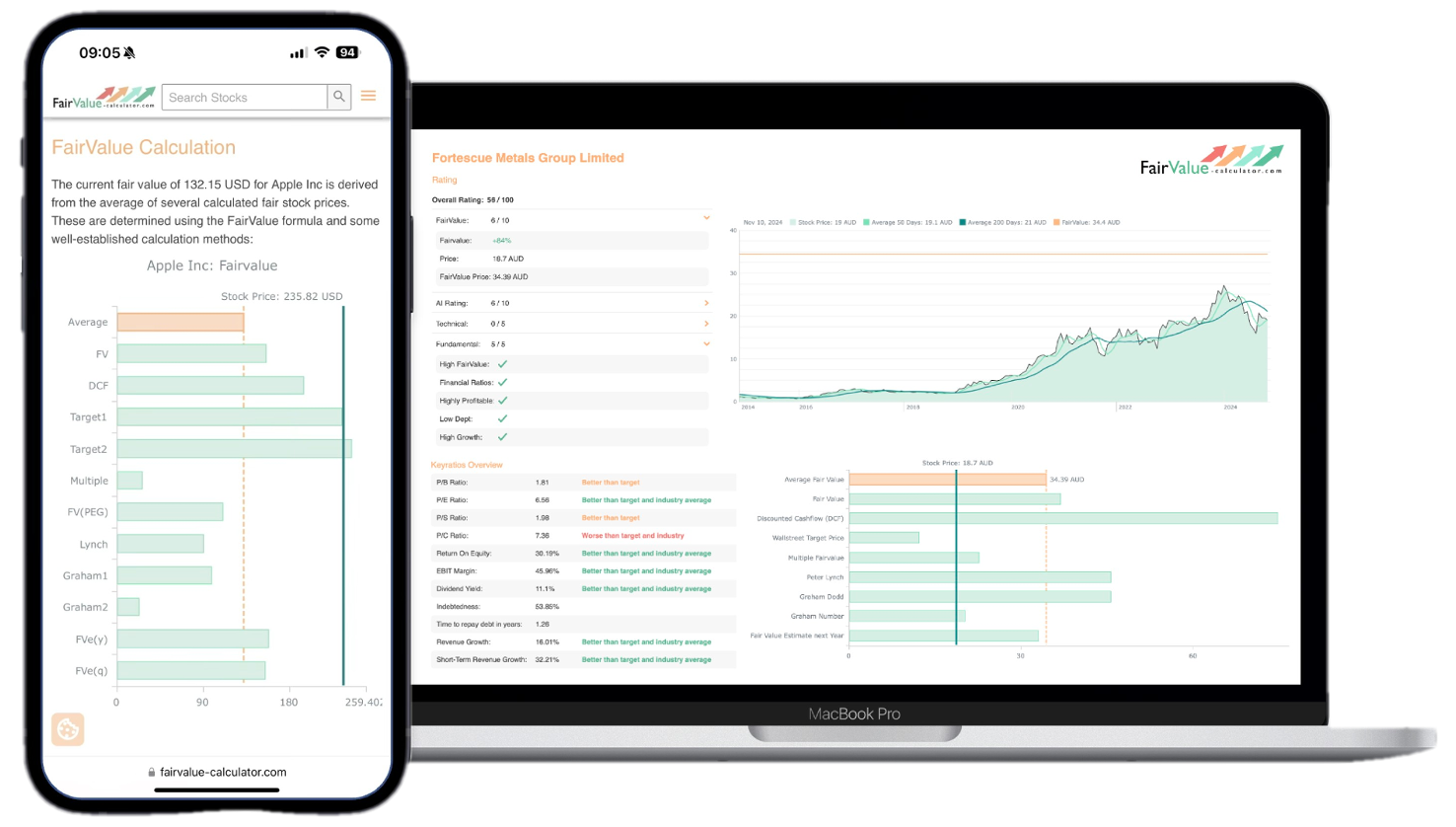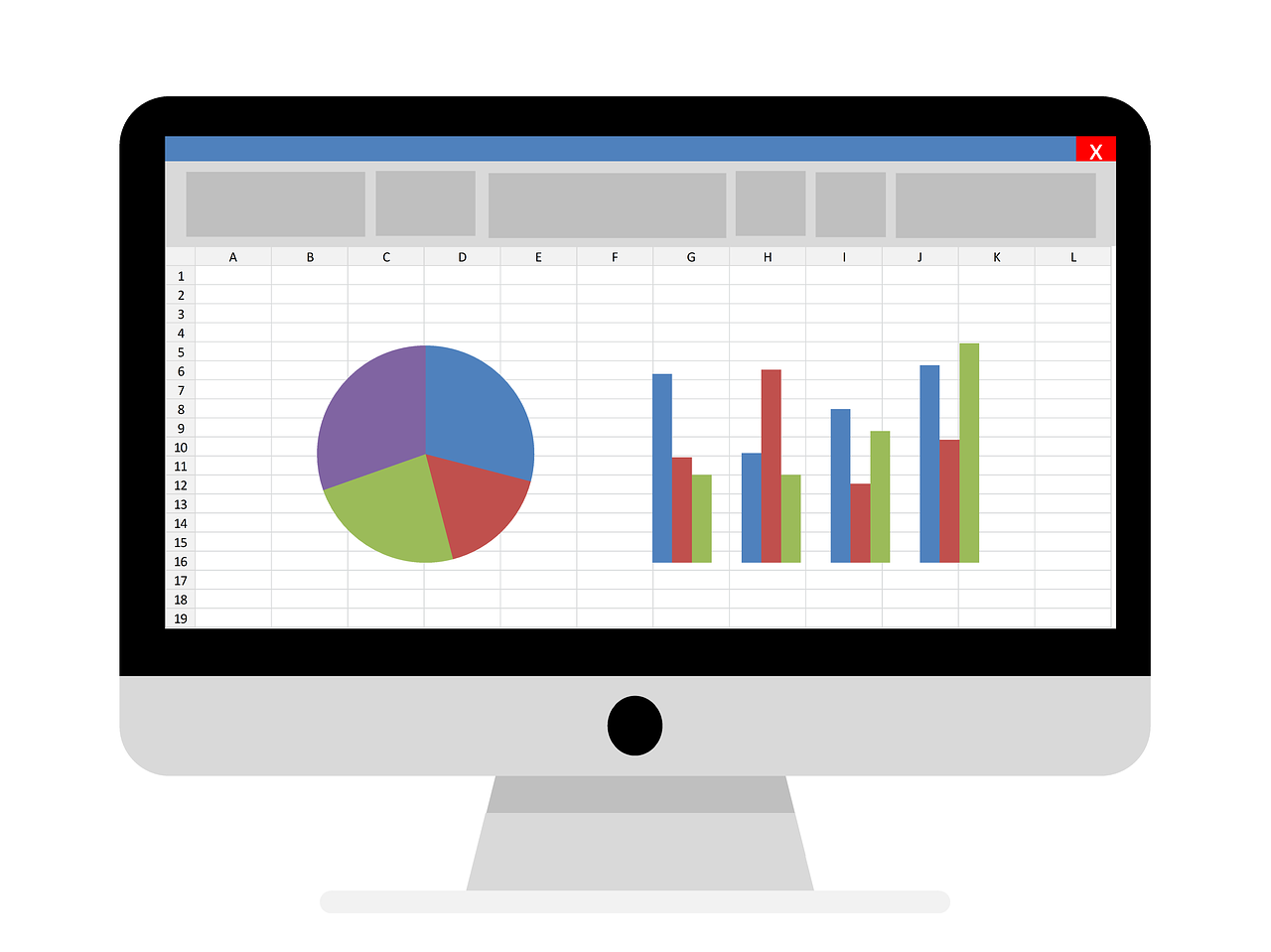In the fast-paced world of stock markets, precision is often touted as king. Yet, as investors and financial analysts diligently sift through data, one crucial query looms large: how wrong can the fair value be if assumptions are off? In the intricate dance of stock valuation, every calculation can pivot significantly depending on the underlying assumptions made. From interest rates and growth forecasts to competitive analysis and market trends, the variables involved are as dynamic as the markets themselves. When these assumptions go awry, the ripple effects can challenge even the most seasoned of investors, leading to unexpected twists in portfolio performance.
Imagine painstakingly crafting a strategy based on seemingly sound valuations, only to discover that the foundational assumptions were flawed. In an era where algorithms and automated systems often guide investment decisions, the margin for error narrows, and the stakes grow ever higher. This blog delves into the potential pitfalls and misjudgments that can occur in stock valuation, illuminating real-world examples where fair value estimates swayed dramatically due to miscalculated assumptions. Whether you’re a seasoned investor or a beginner in the financial ecosystem, understanding these risks is vital to navigating market complexities with greater confidence.
💡 Discover Powerful Investing Tools
Stop guessing – start investing with confidence. Our Fair Value Stock Calculators help you uncover hidden value in stocks using time-tested methods like Discounted Cash Flow (DCF), Benjamin Graham’s valuation principles, Peter Lynch’s PEG ratio, and our own AI-powered Super Fair Value formula. Designed for clarity, speed, and precision, these tools turn complex valuation models into simple, actionable insights – even for beginners.
Learn More About the Tools →
The Significance of Fair Value in Stock Valuation
Fair value serves as the cornerstone of rational investing. It represents the price at which a security would change hands between a willing buyer and a willing seller in an arm’s-length transaction. By offering investors a benchmark, fair value helps them determine whether a stock is undervalued, overvalued, or trading in alignment with its intrinsic worth. But a nagging question always remains: How wrong can the fair value be if assumptions are off? Even minor deviations in projections can lead to significant mispricing, which can misguide decision-making and portfolio allocation.
Beyond merely influencing buy or sell signals, fair value guides risk management, capital budgeting, and long-term strategic planning. Institutional investors rely on discounted cash flow (DCF) analyses to budget billions of dollars, while retail traders use price-to-earnings multiples to gauge entry points. If the underlying assumptions—such as growth rates or discount rates—are flawed, the resulting valuation can be skewed, leading to an unanticipated financial setback. Hence, truly appreciating the significance of fair value means recognizing both its power to guide decisions and its susceptibility to human and model-based errors.
🚀 Test the Fair Value Calculator Now!
Find out in seconds whether your stock is truly undervalued or overpriced – based on fundamentals and future growth.
Try it for Free →Impact of Assumptions on Fair Value Estimates
Assumptions lie at the heart of every valuation model, shaping outputs in profound ways. A single parameter tweak—say, a 0.5% shift in the discount rate—can lead to double-digit percentage swings in fair value. This sensitivity underscores why investors must treat valuation outputs with an understanding of their underlying premises. Without scrutiny, analysts may develop a false sense of precision, believing numerical outcomes to be exact figures rather than informed approximations.
When assumptions are aggressive or unrealistic, the fair value estimate may deviate substantially from market realities. Overly optimistic growth forecasts can inflate valuations, resulting in buoyant price targets that crash under the weight of disappointing earnings. Conversely, pessimistic assumptions can understate intrinsic value, discouraging investment in fundamentally sound companies. In both cases, misaligned assumptions lead to flawed conclusions, making it essential for analysts to challenge their own projections regularly and to stress test their models against a range of scenarios.
Explore our most popular stock fair value calculators to find opportunities where the market price is lower than the true value.
- Peter Lynch Fair Value – Combines growth with valuation using the PEG ratio. A favorite among growth investors.
- Buffett Intrinsic Value Calculator – Based on Warren Buffett’s long-term DCF approach to determine business value.
- Buffett Fair Value Model – Simplified version of his logic with margin of safety baked in.
- Graham & Dodd Fair Value – Uses conservative earnings-based valuation from classic value investing theory.
- Intrinsic vs. Extrinsic Value – Learn the core difference between what a company’s really worth and what others pay.
- Intrinsic Value Calculator – A general tool to estimate the true value of a stock, based on earnings potential.
- Fama-French Model – For advanced users: Quantifies expected return using size, value and market risk.
- Discount Rate Calculator – Helps estimate the proper rate to use in any DCF-based valuation model.
Key Assumptions in Stock Valuation Models
At the core of valuation models lie several pivotal assumptions. Variables such as revenue growth rates, profit margins, terminal growth, and discount rates fundamentally determine the outcome of discounted cash flow analyses. Each assumption carries its own degree of uncertainty and potential bias.
While models can accommodate a range of inputs, the real challenge comes in estimating future conditions—especially in dynamic markets. Whether driven by management guidance or historical trends, these assumptions require constant validation and adjustment to reflect changing economic landscapes and competitive pressures.
Sensitivity Analysis: Unveiling the Vulnerabilities
Sensitivity analysis offers a practical way to understand how much fair value can fluctuate if assumptions shift. By adjusting one variable at a time—such as the discount rate or growth forecast—analysts can observe the impact on intrinsic value. This process highlights the “vulnerability points” within the model.
Through tornado charts or data tables, investors visualize which assumptions wield the greatest influence. For instance, a technology company with high projected growth may be more sensitive to changes in revenue forecasts, whereas a utility firm’s fair value may hinge on discount rates due to its stable cash flows. Recognizing these vulnerability points helps in setting realistic valuation ranges and avoiding overconfidence in point estimates.
Real-Life Cases of Assumption Errors in Fair Value Calculations
Historical missteps illustrate how devastating assumption errors can be. In the late 1990s dot-com bubble, analysts projected near-infinite growth for Internet companies, assigning astronomical fair values. When actual earnings failed to materialize, valuations plummeted, wiping out trillions in market capitalization.
More recently, certain energy firms assumed steady oil prices for their project valuations. When oil prices collapsed in 2014, fair value estimates proved far too optimistic, leading to significant write-downs and credit downgrades. Such real-life examples underscore the importance of conservative assumptions and regular model recalibrations to prevent drastic valuation errors.
Strategies to Mitigate Risks Associated with Incorrect Assumptions
One of the most effective strategies is to use a range of scenarios—base, optimistic, and pessimistic—to capture potential outcomes. Instead of relying on a single projection, analysts can develop probability-weighted valuations that better reflect uncertainty. This probabilistic approach tempers the impact of extreme assumptions and provides a spectrum of fair value estimates.
Another tactic is to incorporate real-time data feeds and rolling forecasts. By updating models with the latest financial results and macroeconomic indicators, investors can adjust their assumptions dynamically. Peer benchmarking is also critical: comparing one’s assumptions against industry averages or consensus estimates helps identify outliers and potential biases before they skew valuations.
The Role of Market Volatility in Fair Value Variability
Market volatility directly influences both the inputs and outputs of valuation models. During turbulent periods, discount rates tend to rise as risk premiums expand, driving down fair value estimates. At the same time, earnings forecasts become less reliable, amplifying uncertainty around growth assumptions. Together, these factors can produce wide valuation ranges that challenge investors’ confidence.
In volatile markets, it becomes crucial to adopt more conservative assumptions and broader valuation bands. Emphasizing liquidity, stress-testing for extreme events, and being prepared to update models more frequently are key practices. Recognizing that “normal” valuation parameters may not hold during market stress allows investors to avoid the trap of overreliance on stale assumptions.
Tools and Resources for Improving Fair Value Accuracy
Modern investors can leverage specialized software and financial databases to refine their assumptions. Platforms like Bloomberg, FactSet, and S&P Capital IQ offer access to consensus forecasts, historical financials, and scenario-analysis modules. These tools help analysts cross-verify their inputs and benchmark against industry peers.
Open-source libraries in Python or R also enable custom modeling and automation of sensitivity tests. By scripting large-scale scenario runs, analysts can quickly identify assumption thresholds that produce materially different fair value outcomes. Combining these quantitative tools with qualitative insights—such as management commentary and industry research—creates a more holistic valuation framework.
Balancing Precision and Prudence in Stock Valuation
While advanced models promise precise outputs, prudence demands humility. Investors should acknowledge that every estimate carries an inherent margin of error. Embracing valuation buffers—such as buying at a discount to calculated fair value—provides a safety net against unforeseen deviations in assumptions.
Additionally, focusing on margin of safety encourages the selection of investments that possess both strong fundamentals and favorable pricing. By blending rigorous quantitative analysis with conservative assumptions, investors can achieve a balance between precision and prudence that underpins sustainable returns.

Conclusion: Navigating Uncertainties in Stock Valuation
Fair value is a powerful guide, yet its reliability hinges on the quality of underlying assumptions. By rigorously stress-testing models, adopting multiple scenarios, and leveraging modern tools, investors can better understand “How wrong can the fair value be if assumptions are off?” and cushion against potential mispricing.
Ultimately, embracing uncertainty and maintaining a disciplined approach to valuation empowers investors to make more informed decisions in the ever-shifting landscape of financial markets.







